When “Pure Water” Is No Longer Pure: Why Reverse Osmosis Needs “Calcium Back”
In the past few years, more and more households, schools, hospitals and even coffee chains have added a small plastic column at the outlet of their RO (reverse-osmosis) purifier.
Inside the column you will not find carbon or resin, but a few hundred grams of grey-white “pebbles”.
They are called “calcium remineralization balls” (a.k.a. weak-alkaline balls or mineralizing ceramic balls), and they have only one mission: to return the calcium that the RO membrane has ruthlessly stripped out.
ZONE®, a filter-media factory that has focused on water for 15 years, now uses a short article to explain the why, how and how-much, and to show you what makes our <Controlled-Release Calcium Mineral Balls> different.
1. RO membrane: a double-edged sword between safety and nutrition
1. 0.0001 µm pores
The pore size of a reverse-osmosis membrane is about one-millionth the diameter of a human hair. Bacteria, viruses, heavy metals and nitrates are almost completely rejected; permeate TDS < 10 ppm—hence the name “pure water”.
2. “So pure” that even Ca & Mg disappear
WHO’s Nutrients in Drinking-water states that long-term consumption of low-mineral water (TDS < 50 ppm) may lead to inadequate intake of calcium and magnesium, with potential risks for bones and the cardiovascular system.
3. Flat taste
Ca²⁺ and Mg²⁺ are the “backbone” of water. Without them the surface tension drops; water feels soft and slightly sweet, but lacks the crisp, cool mouthfeel. Coffee and tea also lose aroma.
2. Remineralization technologies at a glance
Technology
Principle
Pros
Cons
Natural stones (maifan, wood-fish)
Natural leaching
Low cost
Uncontrolled release, heavy-metal risk
Blending bypass
Part of water bypasses RO
Simple
Micro-organisms can “slip through”
Liquid mineral concentrate
Dosed by pump
Accurate
Complex equipment, frequent refill
Functional ceramic balls (Ca balls)
Slow Ca²⁺ release
Safe, stable, maintenance-free
High formulation threshold
Conclusion: For POU (point-of-use) systems, functional ceramic balls give the best balance of cost, safety and performance.
3. The controlled-release secret of ZONE Calcium Mineral Balls
1. Raw material: not stone, but a recipe
Food-grade CaCO₃ + tourmaline + low-temperature binder, calcined at 650 °C into a porous micro-crystal. Tourmaline creates a permanent electric dipole; when water arrives it ionizes instantly, forming a weak alkaline environment (pH 7.5-8.5) that helps calcium dissolve continuously.
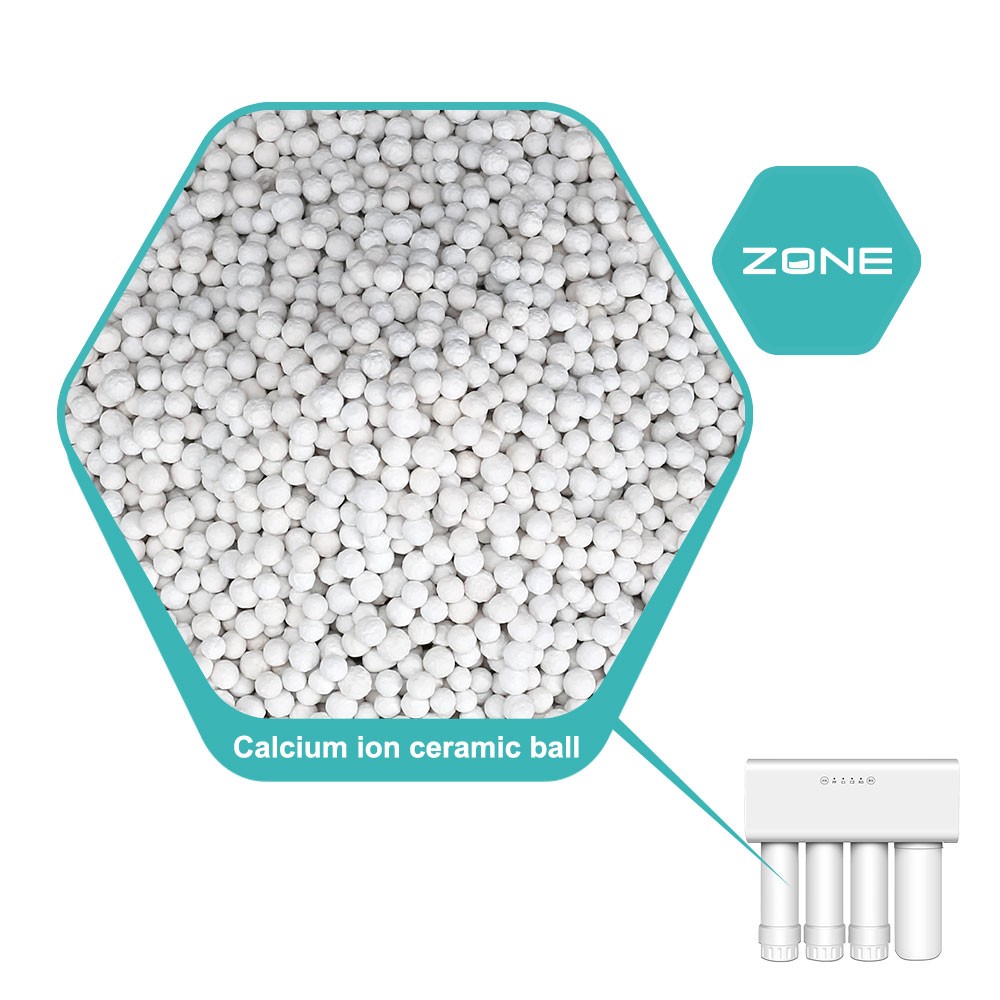
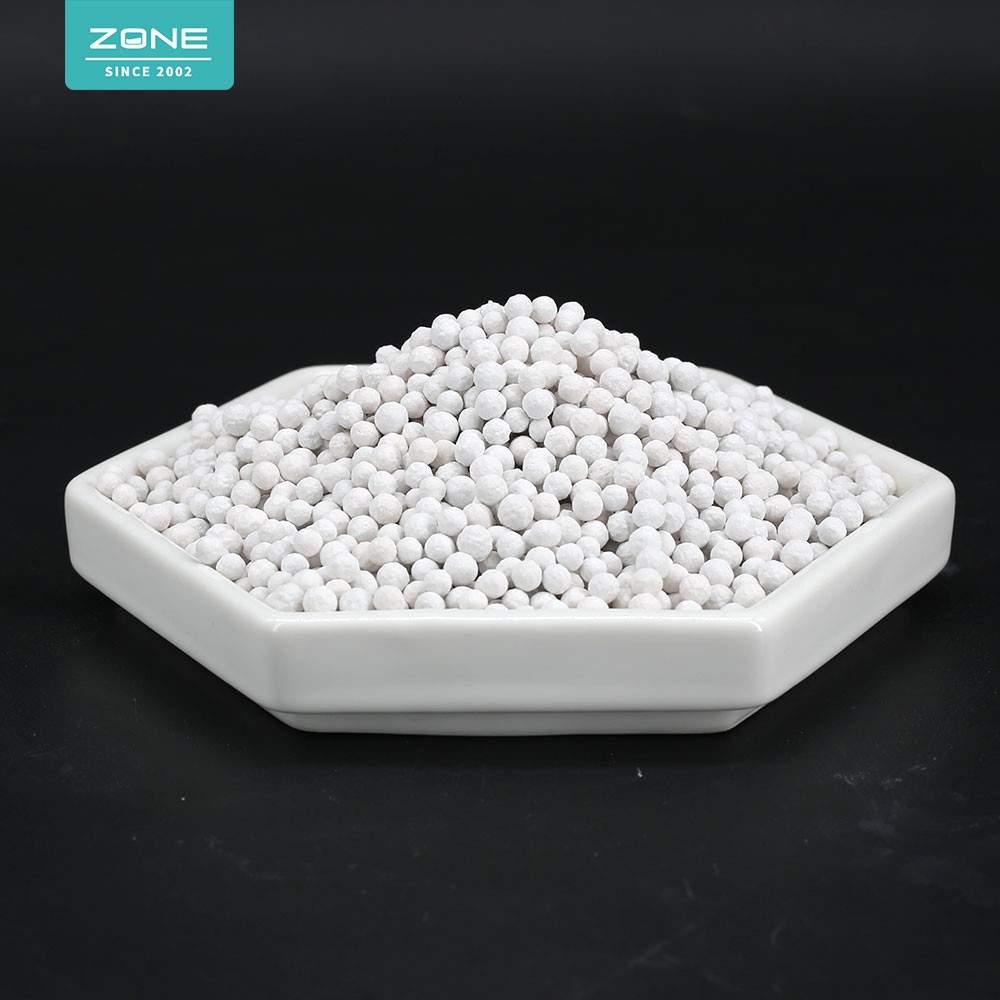
2. Pore-gradient: slowing dissolution down
Surface 0.5 µm mesopores → inner 50 nm micropores act as “buffers”, turning a burst-dissolution curve into a 30-180 day linear release. Service life ≈ 6-12 t depending on flow and raw-water hardness.
3. “0.5-15 ppm” tailorable
By adjusting firing temperature, tourmaline ratio and ball diameter (Ø2-15 mm), outlet Ca²⁺ can be locked at:
- Infant formula preparation 2-4 ppm
- SCA coffee ideal 6-8 ppm
- China natural-water limit 15 ppm
4. Figures speak
Third-party SGS report (key pages; full version downloadable):
- Heavy-metal leaching: Pb < 0.5 µg/L, Cd < 0.1 µg/L, far below GB 5749 limits;
- After 1 000 L throughput, Ca release decline < 8 %, still linear;
- E. coli inhibition > 99 % (tourmaline + Ag⁺ composite grade).
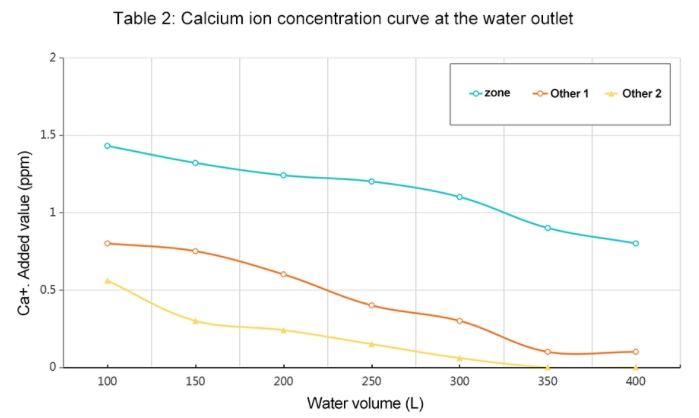
4. Three typical use-cases—check where you fit
1. Household RO undersink
Add 80 g Ca balls (≈1/3 volume) inside the T33 post-carbon. TDS rises from 5 ppm to 30-60 ppm; pH ≈ 7.8, immediate “sweet” taste. Replaces expensive imported “post-mineral” cartridges.
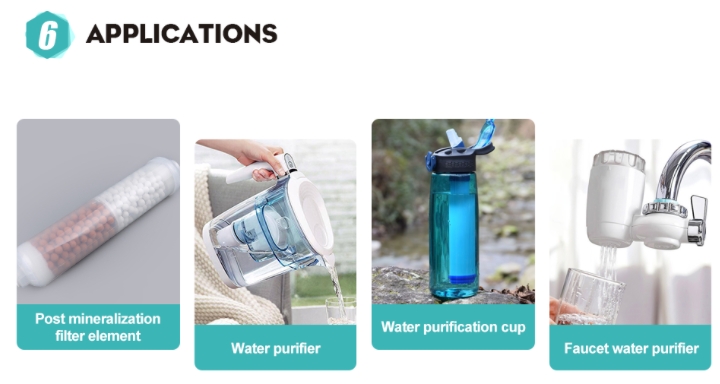
2. School central system
For 400 GPD equipment, add 1 kg Ca balls per 10 L permeate. Outlet Ca²⁺ ≈ 8 ppm. Two litres of daily drinking supply 6-8 % of students’ Ca requirement and cut complaints about “running stomach” caused by low-mineral water.
3. Coffee & tea chains
SCA recommends 50-80 ppm Ca²⁺ (total hardness) for brewing, but RO water is often 0. A “drip” column with ZONE Ca balls stabilizes hardness at 60 ppm; coffee sweetness ↑15 %, crema denser.
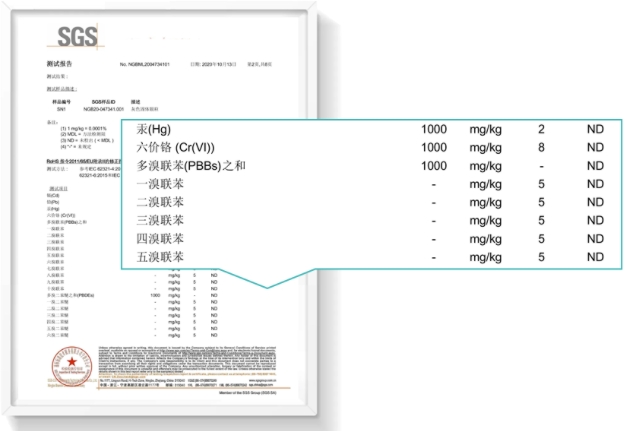
5. Four FAQs we hear every day
1. Will it scale?
Ca balls release ionic Ca²⁺, not solid CaCO₃. Below 15 ppm the saturation index stays negative even at 100 °C—far below the scaling threshold.
2. When to replace?
A 2-3 person household consuming 8 L day⁻¹: 80 g lasts ≈12 months. Commercial units: replace when cumulative flow reaches “rated life” or outlet Ca²⁺ drops 20 % below target.
3. Bacterial growth?
Balls are calcined at 650 °C—sterile; tourmaline + optional Ag⁺ gives >99 % inhibition. Post UV or periodic hot-water flush eliminates any bio-risk.
4. Difference from “alkaline balls”?
Most alkaline balls rely on tourmaline to boost pH instantly to 9-10, but add almost no Ca. ZONE Ca balls focus on calcium supplementation, keeping pH mildly alkaline 7.5-8.5, in line with WHO advice.
RO technology gave drinking water absolute safety for the first time; ZONE Calcium Mineral Balls give that safe water back its nutrition and soul.
We believe the next generation of water treatment is: subtraction for purity, addition for health.
Let every drop that has passed through an RO membrane live up to your love of life.
RELATED NEWS
CATEGORIES
LATEST NEWS
CONTACT US
Name: Joy
Mobile:WhatsApp +86-15615531918
Tel:+86-533-6723045
Whatsapp:+86 15615531918
Email:joy@onlyzone.cn
Add:Building 25-1, 333 Sanying Road, Zibo City, Shandong Province, China